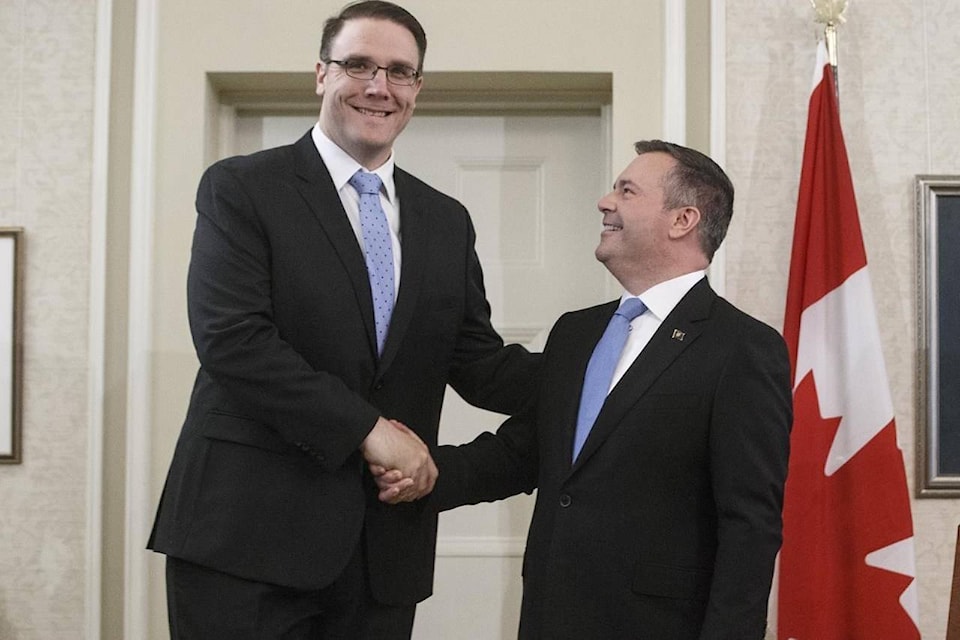By Jacob Cardinal, Local Journalism Initiative Reporter, Alberta Native News
The Canadian Federal Government and the Alberta Provincial Government have agreed to make major budget cuts to environmental monitoring in the oilsands. The deal, in a copy obtained by the Canadian Press, was signed on July 7 by top bureaucrats in Ottawa and Edmonton.
The 2019-2020 budget saw $58 million dollars being dedicated to environmental monitoring — this year, the budget is being cut to $44 million. The agreement reduces funding by approximately 25 percent from the previous year.
The deal says no fieldwork will be done on the main branch of the Athabascan River, which means that there won’t be any funding towards monitoring downstream of the oilsands. There will also be no field studies on wetlands, fish or insects a project weighing the risks of tailings ponds has been stopped and water quality assessment in Wood Buffalo National Park is gone.
Kevin Cash, acting assistant deputy minister of science and technology with Environment and Climate Change Canada, said that the reduced budget is because of the lost time due to COVID. “We have missed part of the field season,” Cash said, claiming that a substantial part of the spring and summer was lost.
Cash also said that the budget was made and approved by a 12-person committee which features six people from Indigenous communities, as well as representatives from industry and the provincial and federal governments.
Jess Sinclair, press secretary for Alberta Environment Minister Jason Nixon, echoed Kevin Cash by saying that the budget is actually in line with the previous years and that the budget does not accurately reflect what is spent.
“The $43.9 million approved for oilsands monitoring in 2020-21 reflects the expected costs of monitoring required to assure immediate public and environmental health, long-term monitoring and focused activities across the areas of air, water, wetlands, wildlife and vegetation monitoring,” she said.
Jonathan Wilkinson, Canada’s environment and climate change minister, echoed both Cash and Sinclair by saying that “there was no decision to cut anything,” and that the reduced budget is a result of COVID. “There will be a bit less spending this year on some of the monitoring activities but it’s simply a function of the fact that, for a third of the season, we couldn’t send people out into the field,” he said.
“It’s important for all Canadians to know that we’re managing resources in a responsible way and ensuring that pollution is not happening,” Wilkinson said. He also added that funding for the environmental monitoring will return to normal in 2021.
Meanwhile, the agreement has received backlash from many people, including Bill Donahue, a former senior civil servant with Alberta’s science and monitoring programs, who said to leave the Athabascan river unmonitored is “crazy.”
“We’ve got one of the biggest industrial developments — the primary problems of which are contamination of the environment and consumption of water — and there’s no downstream monitoring.”
Marlin Schmidt, environment critic for Alberta’s NDP Opposition remarked, “It’s critical to protect the environment. It’s also critical to show the world we can develop these resources responsibly. We’re failing at both.”
Despite the Athabascan river flowing into the Northwest Territories and a binding agreement which makes Alberta keep track of the river, the territories were not made aware of the budget cuts. Joslyn Oosenbrug of the territory’s Environment Department said, “We were not provided with any detailed information about the budget. The (territory) has made its concerns known about the suspension of water quality monitoring in Alberta and continues to advocate for all monitoring to resume, especially the (oilsands monitoring) program.”
The agreement comes after the Alberta Government suspended environmental monitoring during the pandemic earlier this year. The Federal Government also suspended water monitoring when the pandemic started. Despite both the Alberta and Federal Government being responsible for water monitoring that affects the N.W.T, several programs have been suspended for months.
“The fact that the federal government has, on the quality side, not done any monitoring during the pandemic, is a serious oversight with huge impact,” said former N.W.T. environment minister Michael Miltenberger.
Smith’s Landing First Nation Chief Gerry Cheezie said that “we rely on .125wildlife.375 for food, for medicines, for spiritual sustenance.” He added, “Slowly but surely, the oilsands pollution is killing our people.”
“Using a pandemic to suspend environmental monitoring is a breach of people’s trust,” said the Smith’s Landing Chief.
Zoe Guile, conservation co-ordinator with Canadian Parks and Wilderness Society Northwest Territories Chapter, voiced concern for those who live off the Athabascan waters due to the budget cuts towards fish health studies. “If these insects and animals living in this water are … experiencing health issues, then that’s just a really big red flag that that water isn’t safe for people anymore,” said Guile.
Cameron MacDonald, president of the Fort Chipewyan Metis said, “Something’s got to be done, because it’s our air, it’s our water that’s being affected.”
Jake Cardinal is a local journalism initiative reporter for Alberta Native News.
